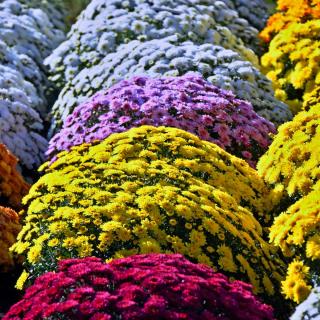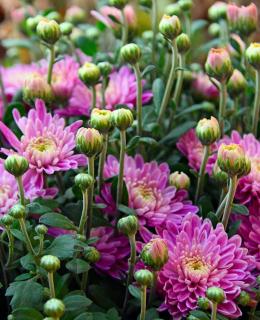

Chrysanthemum is a magnificent flower to embellish gardens and terraces.
Core Chrysanthemum facts
Name – Chrysanthemum
Family – Asteraceae
Type – annual and perennial
Height – 15 to 40 inches (40 to 100 cm)
Exposure – full sun
Soil – ordinary
Flowering – June to November
Planting and advice on caring for it, here is how to grow beautiful chrysanthemum.
Chrysanthemum is planted ideally in spring. Indeed, blooms at the end of summer or during fall, it will have developed a great root system and will resist the harshness of fall and winter much better.
Plant Chrysanthemum purchased in pots in fall directly to the ground. Also possible are larger pots and garden boxes, preferably with soil mix, but hardiness won’t be as good.

Sow Chrysanthemum from March to May in a nursery. Another option is to sow directly in the flower bed in spring.
These are the typical All Saint’s day chrysanthemum.

Chrysanthemum falls victim to several diseases and parasites. These are nonetheless avoidable, especially if you take care to avoid wetting the foliage. Space each plant sufficiently so that they don’t touch each other.
Chrysanthemum is native to Korea but is has reached cult status in Japan. It has become the Japaneses’ favorite flower.
Over there, Japanese call it the Autumn flower and it symbolizes joy and pleasure.
There are a great many chrysanthemum varieties.
They are famous for their pink, red, orange, yellow or white hues. Flowers always resemble those of the more humble daisy.
Chrysanthemum has the advantage of blooming late, until the month of November. It thus appears to decorate our gardens right when other flowers start becoming rare.
They are also planted in pots to adorn balconies and terraces.
 For that, choose good flower plant soil mix over any other, because it has the advantage of retaining the moisture that the plant needs.
For that, choose good flower plant soil mix over any other, because it has the advantage of retaining the moisture that the plant needs.Chrysanthemum is very versatile and will fit in perfectly in a flower bed, in a pot or garden box, and also simply to decorate any portion of the garden.
If you wish to choose a specific color, purchase it in a pot (container) just as they begin to bloom, and transplant them to your garden.
If you live in a region with mild climate where it doesn’t freeze, you’ll be able to savor the blooming of your chrysanthemum for a long time.
©GeorgeSheldon/AdobeStock